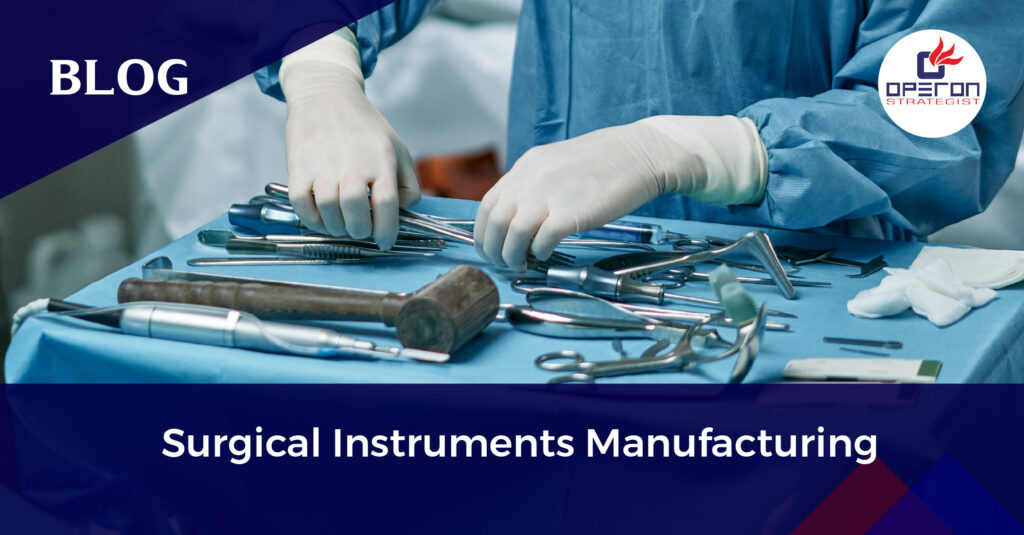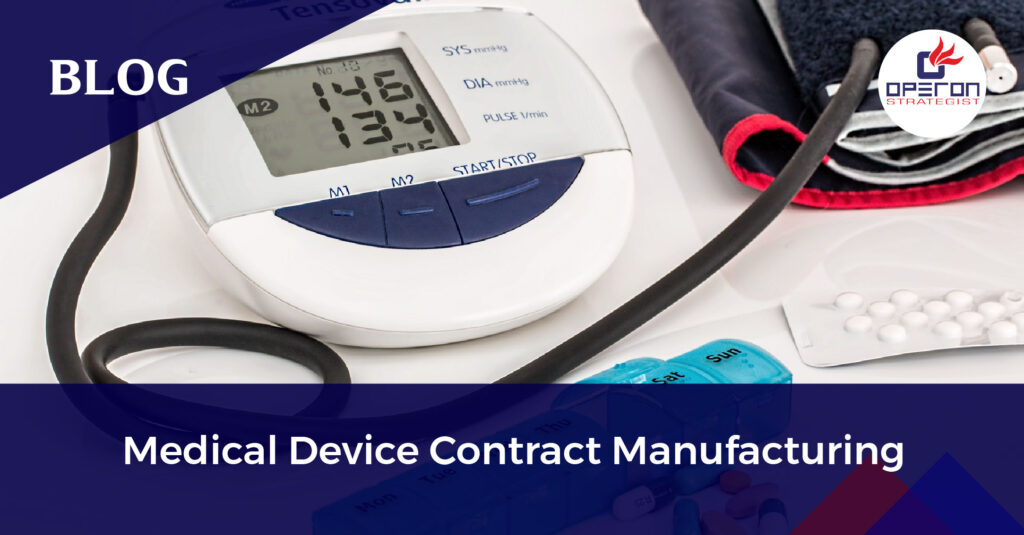An Overview: Surgical Instruments Manufacturing
Surgical instrument manufacturing is done by one-piece forging.
Surgical instruments are usually made from carbon steel, stainless steel, aluminum, or titanium, and are available in a range of sizes. Surgical instruments are specifically designed tools that are used to assist the health care professionals carry out their specific actions during an operation.
For Surgical instruments manufacturing there are many different considerations when choosing a material to use in the medical industry. After all, the wrong material choice could lead to disastrous consequences. 21CFRpart820 is cGMP regulation which ensures medical devices developed in US market need to follow the quality process in development stages.
Looking for Medical Device Consultant?
Let’s have word about your project
Newly developed Surgical instruments manufacturing techniques create a continual demand for improvements within the production process, as well as for the introduction of entirely new instruments.
The Surgical instruments manufacturing is a highly developed craft. It is also a profession that has respected its many traditions over centuries of practice. So, while newer manufacturing techniques have kept pace with advances in surgical practices, in essence, the true craft has changed very little. In this article, we take a look at which metals are used for surgical instruments, and why.
Want to take your surgical instrument manufacturing project to the next level? Contact Operon Strategist today for expert guidance on manufacturing plant layout design and turnkey solutions that can transform your surgical instrument manufacturing project.
The Most Common Metals Used for Surgical Instruments Manufacturing Are:
- Stainless steel
- Titanium
- Tantalum
- Platinium
- Palladium
These metals play a huge role in the Surgical instruments manufacturing the metal must be relatively malleable so it can be shaped without causing flaws, but not too malleable as it needs to hold its shape once manufactured. When it comes to biomedical instruments, not all metals are up to the job, especially base metals. In fact, most Surgical instruments manufacturing are done from metal alloys.
As we know, there are different varieties of stainless steel are the most popular as they are relatively cheap, plentiful, and practical for most applications. Titanium is the next most common, as it has additional strength and is ideal for orthopaedic implants due to the fact it fuses easily with bone. Tantalum’s properties make it an ideal choice to use in Surgical instruments manufacturing .
Finally, there are the precious metals, platinum, and palladium. These are the most expensive, which is why they are rarely used in a medical setting, but they are ideal for small, precision implements and parts.
Types of Surgical Instruments
Most of our surgical instruments can be used for general surgery in a research laboratory setting. Instruments may be roughly categorized by function:
- Cutting instruments include scissors, surgical blades, knives and scalpels.
- Grasping or holding instruments include hemostatic forceps and tissue forceps.
- Retractors, which hold incisions open or hold an organ (or tissue) out of the way, include Gelpi, Weitlaner and US Army style instruments.
Classification of Surgical instruments
There are several classes of surgical instruments:
- Graspers, especially tweezers and forceps.
- Clamps and occluders for blood vessels and other organs.
- Retractors, used to spread open skin, ribs and other tissue.
- Distractors, positioners and stereotactic devices.
- Mechanical cutters (scalpels, lancets, drill bits, rasps, trocars, etc.)
- Dilators and speculae, for access to narrow passages or incisions.
- Suction tips and tubes, for removal of bodily fluids.
- Irrigation and injection needles, tips and tubes, for introducing fluid.
- Powered devices, such as drills, dermatomes.
- Scopes and probes, including fiber optic endoscopes and tactile probes.
- Carriers and appliers for optical, electronic and mechanical devices.
- Measurement devices, such as rulers and callipers.
Other more advanced surgical instruments are used particularly in ophthalmic surgeries, for instance, corneal section scissors, Piere micro scissors and others. Powered surgical instruments, either electrically or air-powered, are also used during surgery. for the medical device manufacturing manufacturer need regulatory guidance and it is always advisable to consult with an experienced team of medical device regulatory consultant for the better results.
Take your surgical instrument manufacturing to new heights with Operon Strategist, the leading medical device regulatory consultant. fulfill all the regulatory requirements help in manufacturing plant layouts and provide turnkey project solutions.
Reach out to us today to revolutionize your surgical instrument manufacturing.
-
adminhttps://operonstrategist.com/author/admin-2/
-
adminhttps://operonstrategist.com/author/admin-2/
-
adminhttps://operonstrategist.com/author/admin-2/
-
adminhttps://operonstrategist.com/author/admin-2/




